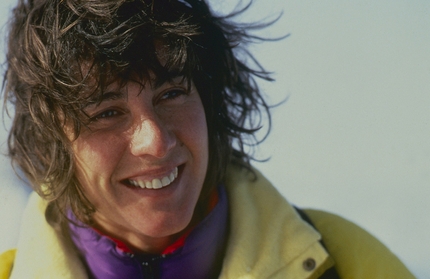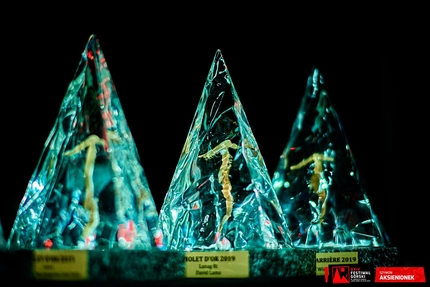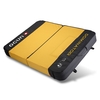Piolets d’Or 2020: Chamlang, Tengi Ragi Tau, Link Sar and Rakaposhi the winning climbs
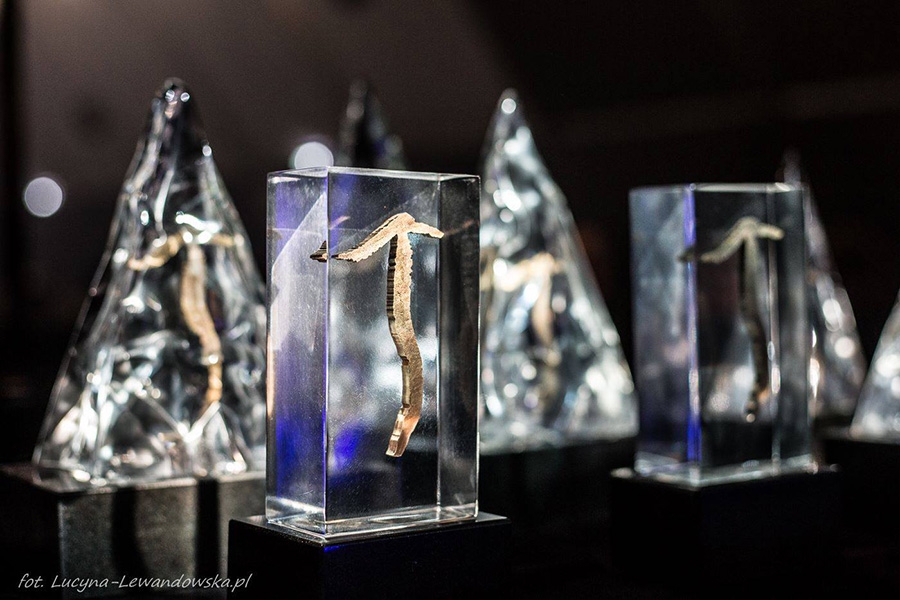
 1 / 27
1 / 27 Lucyna Lewandowska Fotografia
Lucyna Lewandowska Fotografia
Four remarkable climbs are to receive the prestigious Piolets d’Or mountaineering award, scheduled to be celebrated for the third year running at the Ladek Mountain Festival in Poland from 11 - 22 September 2020. From the preliminary list of 50+ ascents the jury selected 4 climbs deemed “significant ascents as "ambassadors" for modern, alpine style mountaineering.” Published below is an extract of the press release of the international prize which will award French mountaineer Catherine Destivelle with the Lifetime Achievement Award. In the past this has gone to Walter Bonatti, Reinhold Messner, Doug Scott, Robert Paragot, Kurt Diemberger, John Roskelley, Chris Bonington, Wojciech Kurtyka, Jeff Lowe, Andrej Štremfelj and Krzysztof Wielicki.
Chamlang (7,321m) - Marek Holeček, Zdeněk Hák
NW Face, UFO Line, 2,000m, WI5 M6, and traverse of the mountains 17 - 23 May from base camp
Since he first saw it in 2001 Marek Holeček had dreamed of climbing the great northwest face of Chamlang in Nepal's Mahalangur Himal. Others had shared the same dream, and after more than half a dozen attempts the face had become one of the most coveted in the country. When Holeček and Zdeněk Hák arrived in spring 2019 it was obvious the face had little snow and a lot of hard water ice. Outflanking objective dangers in the lower section would prove to be one of the keys. From a bivouac at 5,300m on the glacier below the face the two Czechs headed up more or less directly below the summit. On the fourth day they reached the upper east ridge and bivouacked 80m below the top. On May 21 they crossed the summit and spent the rest of the day trying to navigate the Original Japanese route on the south ridge. This proved more difficult than expected. Two more bivouacs - without food - and difficult down-climbing and rappelling in often poor visibility were needed to reach the valley. The route was named UFO Line as a tribute to Reinhold Messner and Doug Scott, who in 1981, with Sherpas Ang Dorje and Pasang, were the first to climb the north side of the Chamlang massif and reach one of the middle summits. There, they were puzzled by a box-like object that hovered above them, shining magnificently in the midday sun.
Tengi Ragi Tau (6938m) Alan Rousseau, Tino Villanueva
West Face, Release The Kraken, 1,600m, AI5 M5+, 13-17 October from a glacier camp below the face
n 2012, on their first expedition to the Himalaya, Alan Rousseau and Tino Villanueva made the first ascent of Langmoche Ri on the north ridge of Tengi Ragi Tau in Nepal's Rolwaling Himal. Walking below the west face of Tengi Ragi Tau they were mesmerized by its sheer magnitude and fine ice runnels through beautiful granite. They returned in 2014 to attempt a direct line, climbing to around 6,500m in less than ideal weather before retreating. Five years later and the face was now attracting the attention of several strong parties. After crossing the Tashi Laptsa pass and camping on the Drolambo Glacier, the two Americans climbed the initial dry-tooling pitches to access the snowy face, then made three bivouacs before reaching the summit. A tricky rappel descent was made down the line of ascent. With a multi-pitch ice crux high on the route, followed by steep flutings of unprotectable snow, this technical and elegant line on one of the most outstanding unclimbed faces of the Rolwaling was just reward for the perseverance of two experienced alpine guides. Their ascent was only the second of this difficult mountain and the first in alpine style.
Link Sar (7041m) - Mark Richey, Steve Swenson, Chris Wright, Graham Zimmerman
First ascent via the SE Face, 2,300m, AI4 M6+ 90°, 31 July - 8 August, 8 days from ABC at 4700m
Another much-coveted problem, this time in the eastern Pakistan Karakoram, Link Sar had received at least eight attempts before 2019. But the difficulties are not just about climbing the peak: the Indo-Pakistan conflict has made this region an on-off affair (largely off) when it comes to obtaining a mountaineering permit. Steve Swenson first attempted Link Sar in 2001 with a strong American team, and then again, after a number of failed permit attempts, in 2017 with Chris Wright and Graham Zimmerman. Having now discovered a feasible line of ascent, these three decided to reinforce the team in 2019 with the addition of Mark Richey. Six days after setting out from Advanced Base, they reached the top. During that time they had waited out a 36+ hours storm, and on the summit day recovered from a 35m leader fall due to avalanche and overcome an ungradable final pitch of deep, steep and unstable "Peruvian" snow. A little over two days were then needed to reverse the route. These climbers succeeded because they were persistent, used their 126 years of combined climbing experience, and understood what partnership meant.
Rakaposhi - Kazuya Hiraide, Kenro Nakajima
South Face and SE Ridge, 4,000m from Base camp 27 June - 3 July round trip from BC
The Hunza region of the Pakistan Karakoram holds a number of impressive mountains that fall only a few hundred metres short of the 8,000m mark. One of the most outstanding is Rakaposhi, first climbed via the southwest ridge in 1958. Whilst the south side of the mountain - leading to the crest of the great southeast ridge - had been reconnoitred in the past, it remained untouched, climbers unable to find a feasible route. An ascent from this less visible side of the mountain would be highly exploratory. From a 3,660m base camp at the snout of the glacier, and in generally unstable weather, Kazuya Hiraide and Kenro Nakajima climbed the south face to 6,100m, both to acclimatize and confirm that their chosen line would go. On their second outing they took three days, strenuously climbing through often deep soft snow, to reach a camp at 6,800m on the southeast ridge, where they were forced to wait two days in bad weather. After this they climbed to the summit and back in a single long day, and on the following reversed their line of ascent all the way down to base camp. Although the route does not feature the high technical difficulties of the three other awarded ascents, its huge length, and the commitment and style of Hiraide and Nakajima's determined ascent on a rarely-climbed mountain, makes it of equal merit for a 2020 Piolet d'Or.
INFO: pioletsdor.net



 Copia link
Copia link

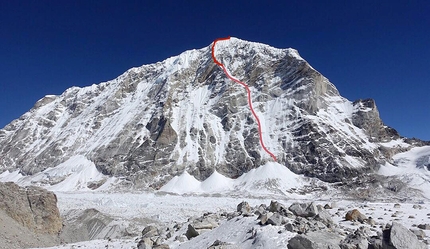

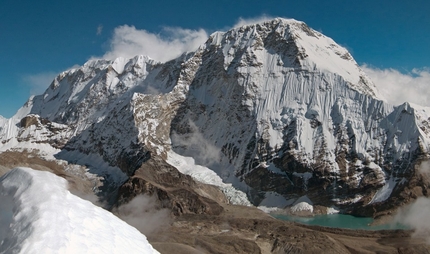

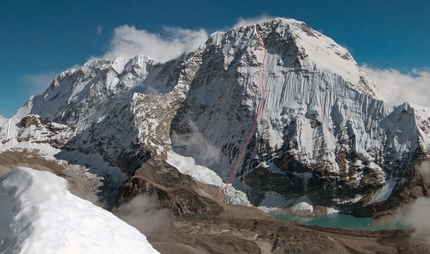
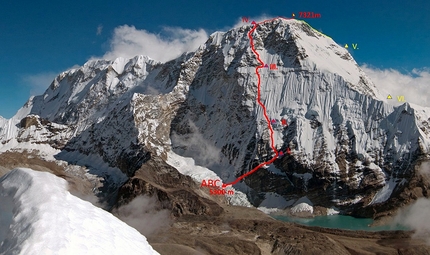






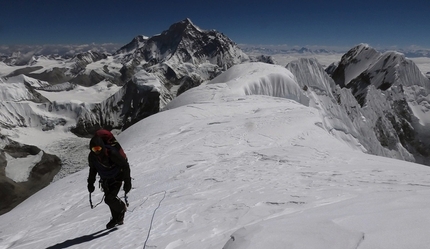





 See all photos
See all photos